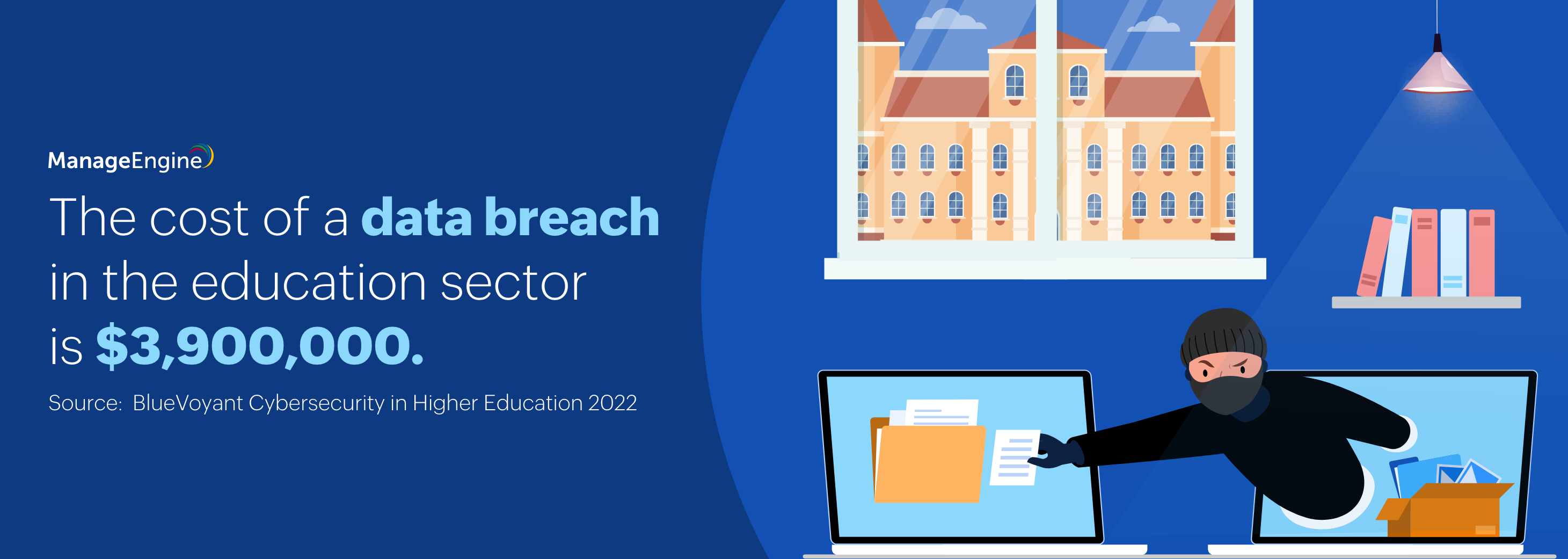The second decade of the 21st century witnessed an unprecedented paradigm shift in the educational sphere. With the onset of the pandemic, conventional ideas of an educational institution gave way to a far modernized and on-the-go approach. Joining class and listening to teachers’ lectures on Zoom or through Microsoft Teams is now the new norm.
With the ever-increasing cyber footprint of the education sector, the question that comes to mind is: How important is cybersecurity for these institutions?

The threats at hand
As per the following reports on the current threat landscape:
-
The education sector was the most-targeted industry for data breaches accounting for nearly 13% of all breaches in 2020.
-
F5Labs observed that education was the third-most DDoS attacked industry in 2021 while being the most targeted by the volume of these attacks.
The education sector’s glaring presence so high up in the ranks in these reports is a matter of utmost concern, both in terms of data privacy and cybersecurity. Following these breaches, students and educators faced a series of canceled classes and inaccessibility to the learning platforms.
From the victim’s POV
While the consequences of such cyberattacks and data breaches seem momentary, it’s just the tip of the iceberg. A peek below the surface level exposes the real threats that include the following:
-
Financial loss
Schools in the US have faced over 1,800 data breaches since 2005 with over 28.6 million records being leaked. Such breaches are often the result of non-compliance with regulations like FERPA, the HEOA, the PPRA, and the GDPR and result in heavy fines. Furthermore, institutions are also at risk of losing millions of dollars should they fall prey to ransomware attacks as seen in the ransomware attack incident at the University of California.
-
Reputational damage
Cyberattacks and data breaches pose a grave threat to every institution’s reputation. Sensitive data exposures dent the prestige and the prominence of these institutions, thereby causing a spike in the churn rate. Besides this, explaining the extent and the severity of the breach to the students, guardians, and others affected by the breach further complicates things.
-
Operational obstruction
While institutions suffer immensely from such attacks, students also face the repercussions. There have been numerous instances of canceled classes, one being Albuquerque Public Schools where the classes of 75,000 students were canceled following a cyberattack.
All of the threats mentioned above emphasize how crucial data security is to educational institutions, especially when the sector is increasingly becoming a favorite for threat actors.
Securing your cyber footprint: The unified way
Now that the extent of the damage caused by data breaches and cyberattacks in educational institutions has been established, the question is, how can they be secured?
Verizon’s Educational Services report states that ransomware accounts for approximately 80% of malware infections in the education sector.
While the modus operandi of threats may vary, rapid patching of vulnerabilities is one of the most effective ways to thwart ransomware. It drastically reduces the attack surface (i.e. vulnerable software or applications), thereby decreasing susceptibility to these attacks.
To maximize the efficacy of patching, identifying zero-day and critical vulnerabilities, and mitigating them rapidly are quintessential approaches. Patch Manager Plus’s centralized dashboard presents a unified view across all the computers in the network, which makes it easier to keep a track of the varied third-party and OS updates required from time to time.
Patch Manager Plus is available both on-premises and in the cloud, making it an ideal solution for institutions of varied sizes and requirements who are looking to secure their cyber footprint and keep data breaches at bay.
Try out the fully featured free version of Patch Manager Plus for 30 days now!
